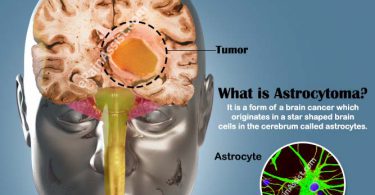Abstract :
Background: Coronaviruses (CoV) are a large family of viruses that cause illness ranging from the common cold to more severe diseases such as Middle East Respiratory Syndrome (MERS-CoV) and Severe Acute Respiratory Syndrome (SARS-CoV). A novel coronavirus (nCoV) is a new strain that has not been previously identified in humans. Coronaviruses are zoonotic, meaning they are transmitted between animals and people. Detailed investigations found that SARS-CoV was transmitted from civet cats to humans and MERS-CoV from dromedary camels to humans. Several known coronaviruses are circulating in animals that have not yet infected humans.
Introduction: Coronaviruses are a group of viruses that cause diseases in mammals and birds. In humans, the viruses cause respiratory infections which are typically mild including the common cold but rarer forms like SARS and MERS can be lethal. In cows and pigs they may cause diarrhea, while in chickens they can cause an upper respiratory disease. There are no vaccines or antiviral drugs that are approved for prevention or treatment.
Coronaviruses are viruses in the subfamily Orthocoronavirinae in the family Coronaviridae, in the order Nidovirales. Coronaviruses are enveloped viruses with a positive-sense single-stranded RNA genome and with a nucleocapsid of helical symmetry. The genomic size of coronaviruses ranges from approximately 26 to 32 kilobases, the largest for an RNA virus. The name “coronavirus” is derived from the Latin corona, meaning crown or halo, which refers to the characteristic appearance of the virus particles (virions): they have a fringe reminiscent of a royal crown or of the solar corona.
Epidemiology: A coronavirus is a kind of common virus that causes an infection in your nose, sinuses, or upper throat. Most coronaviruses are not dangerous. Some types of coronaviruses are serious, though. About 858 people have died from Middle East respiratory syndrome (MERS), which first appeared in 2012 in Saudi Arabia and then in other countries in the Middle East, Africa, Asia, and Europe. In April 2014, the first American was hospitalized for MERS in Indiana and another case was reported in Florida. Both had just returned from Saudi Arabia. In May 2015, there was an outbreak of MERS in Korea, which was the largest outbreak outside of the Arabian Peninsula. In 2003, 774 people died from a severe acute respiratory syndrome (SARS) outbreak. As of 2015, there were no further reports of cases of SARS.
Incidence: Common in all age groups.
Contents
1] Discovery
2] Name and morphology
3] Replication
4] Taxonomy
5] Evolution
6] Human coronaviruses
7] Other animals
Orthocoronavirinae
Electron micrograph of Infectious bronchitis virus virions
Render of 2019 nCoV virion
Virus classification
Virus
Realm: Riboviria
Phylum: incertae sedis
Order: Nidovirales
Family: Coronaviridae
Subfamily: Orthocoronavirinae
Genera[1]
• Alphacoronavirus
• Betacoronavirus
• Deltacoronavirus
• Gammacoronavirus
Synonyms[2][3]
• Coronavirinae
Discovery
Coronaviruses were discovered in the 1960s; the earliest ones discovered were infectious bronchitis virus in chickens and two viruses from the nasal cavities of human patients with the common cold that were subsequently named human coronavirus 229E and human coronavirus OC43. Other members of this family have since been identified, including SARS-CoV in 2003, HCoV NL63 in 2004, HKU1 in 2005, MERS-CoV in 2012, and 2019-nCoV in 2019; most of these have been involved in serious respiratory tract infections.
Name and morphology
The name “coronavirus” is derived from the Latin corona and the Greek κορώνη (korṓnē, “garland, wreath”), meaning crown or halo. This refers to the characteristic appearance of virions (the infective form of the virus) by electron microscopy, which have a fringe of large, bulbous surface projections creating an image reminiscent of a royal crown or of the solar corona. This morphology is created by the viral spike (S) peplomers, which are proteins that populate the surface of the virus and determine host tropism. Proteins that contribute to the overall structure of all coronaviruses are the spike (S), envelope (E), membrane (M) and nucleocapsid (N).
In the specific case of the SARS coronavirus (see below), a defined receptor-binding domain on S mediates the attachment of the virus to its cellular receptor, angiotensin-converting enzyme 2 (ACE2). Some coronaviruses (specifically the members of Betacoronavirus subgroup A) also have a shorter spike-like protein called hemagglutinin esterase (HE).
Replication:
Following the entry of this virus into the cell, the virus particle is uncoated and the RNA genome is deposited into the cytoplasm.
The coronavirus RNA genome has a 5′ methylated cap and a 3′ polyadenylated tail. This allows the RNA to attach to ribosomes for translation.
Coronaviruses also have a protein known as a replicase encoded in its genome which allows the RNA viral genome to be transcribed into new RNA copies using the host cell’s machinery. The replicase is the first protein to be made; once the gene encoding the replicase is translated, the translation is stopped by a stop codon. This is known as a nested transcript. When the mRNA transcript only encodes one gene, it is monocistronic. A coronavirus non-structural protein provides extra fidelity to replication because it confers a proofreading function,[9] which is lacking in RNA-dependent RNA polymeraseenzymes alone.
The RNA genome is replicated and a long polyprotein is formed, where all of the proteins are attached. Coronaviruses have a non-structural protein – a protease – which is able to separate the proteins in the chain. This is a form of genetic economy for the virus, allowing it to encode the greatest number of genes in a small number of nucleotides.
Taxonomy
• Genus: Alphacoronavirus; type species: Alphacoronavirus 1
o Species: Alpaca coronavirus, Alphacoronavirus 1, Human coronavirus 229E, Human Coronavirus NL63, Miniopterus Bat coronavirus 1, Miniopterus Bat coronavirus HKU8, Porcine epidemic diarrhea virus, Rhinolophus Bat coronavirus HKU2, Scotophilus Bat coronavirus 512
• Genus Betacoronavirus; type species: Murine coronavirus
o Species: Betacoronavirus 1, Human coronavirus HKU1, Murine coronavirus, Pipistrellus Bat coronavirus HKU5, Rousettus Bat coronavirus HKU9, SARS coronavirus, Tylonycteris Bat coronavirus HKU4, MERS-CoV, Human coronavirus OC43, Hedgehog coronavirus 1 (EriCoV), Wuhan coronavirus (2019-nCoV)
• Genus Gammacoronavirus; type species: Avian coronavirus
o Species: Avian coronavirus, Beluga whale coronavirus SW1, Duck coronavirus, Infectious bronchitis virus
• Genus Deltacoronavirus; type species: Bulbul coronavirus HKU11
o Species: Bulbul coronavirus HKU11, Munia coronavirus HKU13, Thrush coronavirus HKU12
Evolution
The most recent common ancestor of the coronavirus has been placed at 8000 BCE. They may be considerably older than this. Another estimate places the most recent common ancestor (MRCA) of all coronaviruses around 8100 BCE. The MRCA of Alphacoronavirus, Betacoronavirus, Gammacoronavirus, and Deltacoronavirus have been placed at about 2400 BCE, 3300 BCE, 2800 BCE and 3000 BCE, respectively. It appears that bats and birds, the warm-blooded flying vertebrates, are ideal hosts for the coronavirus gene source (with bats for Alphacoronavirus and Betacoronavirus, and birds for Gammacoronavirus and Deltacoronavirus) to fuel coronavirus evolution and dissemination.
Bovine coronavirus and canine respiratory coronavirus diverged from a common ancestor in 1951. Bovine coronavirus and human coronavirus OC43 diverged in 1899. Bovine coronavirus diverged from the equine coronavirus species at the end of the 18th century. Another estimate suggests that human coronavirus OC43 diverged from bovine coronavirus in 1890.
The MRCA of human coronavirus OC43 has been dated to the 1950s.
Middle East respiratory syndrome coronavirus, although related to several bat species, appears to have diverged from these several centuries ago.[18] The human coronavirus NL63 and a bat coronovirus shared an MRCA 563–822 years ago.
The most closely related bat coronovirus and the SARS coronavirus diverged in 1986. A path of evolution of the SARS virus and keen relationship with bats have been proposed. The authors suggest that the coronaviruses have been coevolved with bats for a long time and the ancestors of SARS virus first infected the species of the genus Hipposideridae, subsequently spread to species of the Rhinolophidae and then to civets, and finally to humans.
Alpaca coronavirus and human coronavirus 229E diverged before 1960.
Human coronaviruses
Coronaviruses are believed to cause a significant percentage of all common colds in human adults and children. Coronaviruses cause colds with major symptoms, e.g. fever, throat swollen adenoids, in humans primarily in the winter and early spring seasons.] Coronaviruses can cause pneumonia, either direct viral pneumonia or a secondary bacterial pneumonia and they can also cause bronchitis, either direct viral bronchitis or a secondary bacterial bronchitis. The much publicized human coronavirus discovered in 2003, SARS-CoV which causes severe acute respiratory syndrome (SARS), has a unique pathogenesis because it causes both upper and lower respiratory tract infections.
There are seven strains of human coronaviruses:
1. Human coronavirus 229E (HCoV-229E)
2. Human coronavirus OC43 (HCoV-OC43)
3. SARS-CoV
4. Human coronavirus NL63 (HCoV-NL63, New Haven coronavirus)
5. Human coronavirus HKU1
6. Middle East respiratory syndrome coronavirus (MERS-CoV), previously known as novel coronavirus 2012 and HCoV-EMC.
7. Novel coronavirus (2019-nCoV), also known as Wuhan pneumonia or Wuhan coronavirus.[28] (‘Novel’ in this case means newly discovered, or newly originated, and is a placeholder name.)[27]
The coronaviruses HCoV-229E, -NL63, -OC43, and -HKU1 continually circulate in the human population and cause respiratory infections in adults and children world-wide.
Severe acute respiratory syndrome (SARS)
In 2003, following the outbreak of severe acute respiratory syndrome (SARS) which had begun the prior year in Asia, and secondary cases elsewhere in the world, the World Health Organization (WHO) issued a press release stating that a novel coronavirus identified by a number of laboratories was the causative agent for SARS. The virus was officially named the SARS coronavirus (SARS-CoV). Over 8,000 people were infected, about 10% of whom died.
Middle East respiratory syndrome
In September 2012, a new type of coronavirus was identified, initially called Novel Coronavirus 2012, and now officially named Middle East respiratory syndrome coronavirus (MERS-CoV). The World Health Organization issued a global alert soon after.The WHO update on 28 September 2012 stated that the virus did not seem to pass easily from person to person.However, on 12 May 2013, a case of human-to-human transmission in France was confirmed by the French Ministry of Social Affairs and Health. In addition, cases of human-to-human transmission have been reported by the Ministry of Health in Tunisia.
Two confirmed cases involved people who seemed to have caught the disease from their late father, who became ill after a visit to Qatar and Saudi Arabia. Despite this, it appears that the virus has trouble spreading from human to human, as most individuals who are infected do not transmit the virus. By 30 October 2013, there were 124 cases and 52 deaths in Saudi Arabia.
After the Dutch Erasmus Medical Centre sequenced the virus, the virus was given a new name, Human Coronavirus–Erasmus Medical Centre (HCoV-EMC). The final name for the virus is Middle East respiratory syndrome coronavirus (MERS-CoV). In May 2014, the only two United States cases of MERS-CoV infection were recorded, both occurring in healthcare workers who worked in Saudi Arabia and then traveled to the U.S. One was treated in Indiana and one in Florida. Both of these individuals were hospitalized temporarily and then discharged.
In May 2015, an outbreak of MERS-CoV occurred in the Republic of Korea, when a man who had traveled to the Middle East, visited 4 different hospitals in the Seoul area to treat his illness. This caused one of the largest outbreaks of MERS-CoV outside of the Middle East. As of December 2019, 2,468 cases of MERS-CoV infection had been confirmed by laboratory tests, 851 of which were fatal, a mortality rate of approximately 34.5%.
Novel coronavirus (2019-nCoV)
Cross-sectional model of a coronavirus
In December 2019, a pneumonia outbreak was reported in Wuhan, China. On 31 December 2019, the outbreak was traced to a novel strain of coronavirus, which was labeled as 2019-nCoV by the World Health Organization (WHO). According to Daniel Lucey at Georgetown University, the first human infections must have occurred in November 2019 and maybe earlier.
By 29 January 2020, more than 130 deaths had been reported and more than 6,160 confirmed cases in this coronavirus pneumonia outbreak. The Wuhan strain has been identified as a new strain of Betacoronavirus from group 2B with an ~70% genetic similarity to the SARS-CoV. The virus was suspected to have originated in snakes, but many leading researchers disagree with this conclusion. Daniel Lucey, an infectious disease specialist at Georgetown University, stated that “Now it seems clear that [the] seafood market is not the only origin of the virus”.
Other animals
Coronaviruses have been recognized as causing pathological conditions in veterinary medicine since the early 1970s. Except for avian infectious bronchitis, the major related diseases have mainly an intestinal location.
Diseases caused
Coronaviruses primarily infect the upper respiratory and gastrointestinal tract of mammals and birds. They also cause a range of diseases in farm animals and domesticated pets, some of which can be serious and are a threat to the farming industry. In chickens, the infectious bronchitis virus (IBV), a coronavirus, targets not only the respiratory tract but also the urogenital tract. The virus can spread to different organs throughout the chicken. Economically significant coronaviruses of farm animals include porcine coronavirus (transmissible gastroenteritis coronavirus, TGE) and bovine coronavirus, which both result in diarrhea in young animals. Feline coronavirus: two forms, feline enteric coronavirus is a pathogen of minor clinical significance, but spontaneous mutation of this virus can result in feline infectious peritonitis (FIP), a disease associated with high mortality. Similarly, there are two types of coronavirus that infect ferrets: ferret enteric coronavirus causes a gastrointestinal syndrome known as epizootic catarrhal enteritis (ECE), and a more lethal systemic version of the virus (like FIP in cats) known in ferrets as ferret systemic coronavirus (FSC).
There are two types of canine coronavirus (CCoV), one that causes mild gastrointestinal disease and one that has been found to cause respiratory disease. Mouse hepatitis virus (MHV) is a coronavirus that causes an epidemic murine illness with high mortality, especially among colonies of laboratory mice. Sialodacryoadenitis virus (SDAV) is highly infectious coronavirus of laboratory rats, which can be transmitted between individuals by direct contact and indirectly by aerosol. Acute infections have high morbidity and tropism for the salivary, lachrymal and hardarian glands
A HKU2-related bat coronavirus called swine acute diarrhea syndrome coronavirus (SADS-CoV) causes diarrhea in pigs.
Prior to the discovery of SARS-CoV, MHV had been the best-studied coronavirus both in vivo and in vitro as well as at the molecular level. Some strains of MHV cause a progressive demyelinating encephalitis in mice which has been used as a murine model for multiple sclerosis. Significant research efforts have been focused on elucidating the viral pathogenesis of these animal coronaviruses, especially by virologists interested in veterinary and zoonotic diseases.
In domestic animals
• Infectious bronchitis virus (IBV) causes avian infectious bronchitis.
• Porcine coronavirus (transmissible gastroenteritis coronavirus of pigs, TGEV).
• Bovine coronavirus (BCV), responsible for severe profuse enteritis in of young calves.
• Feline coronavirus (FCoV) causes mild enteritis in cats as well as severe Feline infectious peritonitis (other variants of the same virus).
• the two types of canine coronavirus (CCoV) (one causing enteritis, the other found in respiratory diseases).
• Turkey coronavirus (TCV) causes enteritis in turkeys.
• Ferret enteric coronavirus causes epizootic catarrhal enteritis in ferrets.
• Ferret systemic coronavirus causes FIP-like systemic syndrome in ferrets.
• Pantropic canine coronavirus.
• Rabbit enteric coronavirus causes acute gastrointestinal disease and diarrhea in young European rabbits. Mortality rates are high.
Signs and Symptoms of Wuhan Novel Coronavirus Infection
It shows symptoms that of severe respiratory tract infection giving rise to pneumonia with some gastrointestinal symptoms like other corona virus infection, Its symptoms are much related to 2003 SARS Epidemic caused due to SARS-CoV.
• Almost 90% cases of 2019-nCoV infection presents with Fever
• Dry Coughing
• General Weakness
• Fatigue
• Of which 20% will have shortness of breath
• Almost 15% of all the the cases will go into respiratory distress
• X ray shows bilateral Lungs involvement
• Leucopenia -Low WBC count especially lymphocytes – lymphopenia
.
Clinical features:
Common signs of infection include respiratory symptoms:
Fever, cough, shortness of breath and breathing difficulties. In more severe cases, infection can cause pneumonia, severe acute respiratory syndrome, kidney failure and even death.
Management principles: Give patient education,support, and appropriate reassurance.
HOMOEOPATHIC MANAGEMENT :
Therapeutic aim: Achieve remission, control disease activity.
Homoeopathic medicines for corona virus:
Primary Remedies:
1)Bryonia
This remedy is often indicated when a cough is dry and very painful. The person feels worse from any movement, and may even need to hold his or her sides or press against the chest to keep it still. The cough can make the stomach hurt, and digestion may be upset. A very dry mouth is common, and the person may be thirsty. A person who wants to be left alone when ill, and not talked to or disturbed, is likely to need Bryonia.
2)Causticum
Bronchitis with a deep, hard, racking cough can indicate a need for this remedy. The person fees that mucus is stuck in the throat and upper chest, and may cough continually to try to loosen it. A feeling of rawness and soreness can develop, or a sensation as if a rock is stuck inside. Chills can occur along with fever. Exposure to cool air aggravates the cough, but drinking something cold can help. The person may feel worse when days are cold and clear, and better in wet weather.
3)Pulsatilla
Bronchitis with a feeling of weight in the chest, and a cough with choking and gagging that brings up thick yellow mucus, may respond to this remedy. The cough tends to be dry and tight at night, and loose in the morning. The fever may be worse in the evening and at night. Feeling too warm or being in a stuffy room tends to make the person worse, and open air brings improvement. Thirst is usually low. A person who needs this remedy often is moody and emotional and wants attention and sympathy. (This remedy is often helpful to children who are tearful when not feeling well and want to be held and comforted.)
Other Remedies:
1]Antimonium tartaricum
This remedy is indicated when the person has a feeling of wet mucus in the chest, and breathing makes a bubbly, rattling sound. The cough takes effort and is often not quite strong enough to bring the mucus up, although burping and spitting may be of help. The person may feel drowsy or dizzy, and feel better when lying on the right side or sitting up.
2]Calcarea carbonica
This remedy is often indicated for bronchitis after a cold. The cough can be troublesome and tickling, worse from lying down or stooping forward, worse from getting cold, and worse at night. Children may have fever, sweaty heads while sleeping, and be very tired. Adults may feel more chilly and have clammy hands and feet, breathing problems when walking up slopes or climbing stairs, and generally poor stamina.
3]Dulcamara
When a person easily gets ill after being wet and chilled (or when the weather changes from warm and dry to wet and cool) this remedy may be indicated. The cough can be tickly, hoarse, and loose, and worse from physical exertion. Tendencies toward allergies (cats, pollen, etc.) may increase the person’s susceptibility to bronchitis.
4]Hepar sulphuris calcareum
The cough that fits this remedy is usually hoarse and rattling, with yellow mucus coming up. The person can be extremely sensitive to cold—even a minor draft or sticking an arm out from under the covers may set off jags of coughing. Cold food or drink can make things worse. A person who needs this remedy feels vulnerable both physically and emotionally, and may act extremely irritable and out of sorts.
5]Kali bichromicum
A metallic, brassy, hacking cough that starts with a troublesome tickling in the upper air-tubes and brings up strings of sticky yellow mucus can indicate this remedy. A sensation of coldness may be felt inside the chest, and coughing can lead to pain behind the breastbone or extending to the shoulders. Breathing may make a rattling sound when the person sleeps. Problems are typically worse in the early morning, after eating and drinking, and from exposure to open air. The person feels best just lying in bed and keeping warm.
6]Silicea (also called Silica)
A person who needs this remedy can have bronchitis for weeks at a stretch, or even all winter long. The cough takes effort and may bring up yellow or greenish mucus, or little granules that have an offensive smell. Stitching pains may be felt in the back when the person is coughing. Chills are felt more than heat during fever, and the person is likely to sweat at night. A person who needs this remedy is usually sensitive and nervous, with low stamina, swollen lymph nodes, and poor resistance to infection.
7]Sulphur
This remedy can be indicated when a person has had many bouts of pneumonia (sometimes the resistance has been weakened by taking antibiotics too often for minor complaints). The cough feels irritating, burning, and painful; yellow or greenish mucus may be produced. Problems can be worse if the person gets too warm in bed, and breathing problems at night may wake the person up. Redness of the eyes and mucous membranes, and foul-smelling breath and perspiration are often seen when a person needs this remedy.
• ACONITUM NEPELLUS
• BELLADONA
• ARSENICUM ALBUM 30
• ASPIDOSPERMA QUEBRACHO
• BLATTA ORIENTALIS
• ARALIA RACEMOSA
• BORRHEAVIA DIFFUSA
• OCCIMUM SANCTUM
• FERRUM PHOSPHORICUM
• KALIUM SULPHURICUM
• KALIUM MURIATICUM
• ANTIMONIUM TARTARICUM
• DROSERA ROTUNDIFOLIA
• SPONGIA TOSTA
Preventive medicine:
On an empty stomach, take one dose of the homeopathic solution, Arsenicum album30, each day for three days.
Mother tinctures of Arsenicum Alb, Crotalus hor and Eupatorium perfoliatum are currently believed to be indicative for curative as well as preventive medication for coronavirus.
Mother tinctures of Ocimum sanctum (popularly known as Shyama Tulsi) and Tinospora cordifolia (extract of Amrita Balli in Kannada) have also been helpful in preventing respiratory infections like this.
OTHER MANAGEMENT:
• Maintain personal hygiene
• Wash your hands often with soap and water for at least 20 seconds. If soap and water are not available.
• Avoid touching your eyes, nose, and mouth with unwashed hands
• Avoid close contact with people who are sick
• Stay home when you are sick
• Cover your face during cough or sneeze and wash your hands after coughing or sneezing.
• Clean and disinfect frequently touched objects and surfaces
• Preferably, use an N95 mask while traveling or working in public places to avoid droplet transmission.
• If you suspect Corona Viral infection, wear a mask and contact your nearest hospital immediately.
Bibliography
1 https://en.wikipedia.org/wiki/Coronavirus
2 https://www.cdc.gov/coronavirus/about/symptoms.html
3 https://www.webmd.com/lung/coronavirus#1
4 https://www.who.int/health-topics/coronavirus
5 https://wa.kaiserpermanente.org/kbase/topic.jhtml?docId=hn-2202000
6 https://www.sciencealert.com/india-s-government-is-recommending-homeopathy-to-ward-off-the-coronavirus
7 https://www.thehindubusinessline.com/news/ministry-of-ayush-issues-advisory-on-use-of-traditional-medicinal-practices/article30690128.ece#
8 Kayne, S., & Rafferty, A. (1994). The use of Arsenicum album 30c to complement conventional treatment of neonatal diarrhoea (‘scours’) in calves. British Homoeopathic Journal, 83(4), 202-204.
9 De Verdier, K., Öhagen, P., & Alenius, S. (2003). No effect of a homeopathic preparation on neonatal calf diarrhoea in a randomised double-blind, placebo-controlled clinical trial. Acta Veterinaria Scandinavica, 44(2), 97.
10 https://atomictherapy.org/novel-coronavirus-2019-homeopathic-treatment/
11 William Boericke, MD. Pocket manual of Homoeopathic Materia Medica and Repertory.





